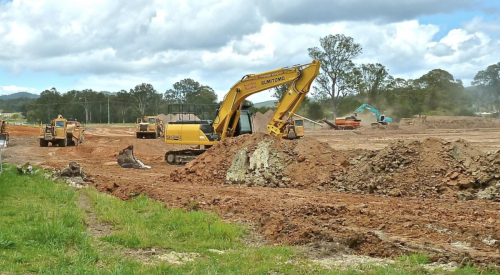| Heather McCune, Editor in Chief
|
In the town where I grew up there was an infamous landmark — the dreaded traffic circle. Four major roadways, each two lanes, came together around a grassy bit of land, and not anywhere was there a traffic signal, street sign or lane marker to guide drivers. Navigating what the city founders thought was an intersection required equal parts courage and caution. Never quite sure which car was supposed to go when, you’d nose out into the fray and hope the other drivers were paying attention. Always, it was with much gratitude that you passed through unharmed.
After many hits, near misses and wasted gasoline (one out-of-town friend went around the circle 13 times before she figured out how to get out), the city installed aids for drivers — stop signs, street markers, lane configurations, etc. I occasionally travel through that traffic circle from time to time, and while it’s still something of an adventure, no longer is it a complete mystery on how to navigate from point A to point B.
As I read through this 35th edition of the Giants report, I couldn’t help but remember that intersection — the confusion it caused, the courage it required and the difference a few directional aids made. There is in the residential construction industry today a lot of information, a lot of competing voices predicting very different futures for home builders, and the combined din is causing a lot of confusion. To create some order out of the information chaos, here are a few directional aids to help us all navigate:
National trends/local business: It’s easy to read a report such as Andersen Corporate Finance’s The Impending Consolidation of the Homebuilding Industry and fixate on its prediction that by 2011 the top 20 home builders will complete 75% of all U.S. new home sales. Author Paul DeCain offers compelling data to support his position. Among the many advantages favoring the large national builders, DeCain specifically cites lower capital costs, operating and overhead efficiencies, significant land control, and powerful brands. These companies also have an edge over their regional counterparts when it comes to their ability to joint-venture land with other major builders and to shift resources regionally as the economy dictates.
What isn’t clear in DeCain’s analysis are the advantages that come from being the big builder in one region or one market. For that perspective we turned to noted consultant Chuck Shinn, who counts as clients many of the firms most endangered according to Andersen’s report. Rather than fearing for their futures, Shinn points to historical precedent, statistical quandaries in the consolidation case and a thorough knowledge of what it takes to create a profitable, sustainable home building business.
Shinn’s strongest argument comes in this simple advice: Don’t focus so much on the national trends and risk forgetting that home building is still a uniquely local business. The success of any builder, project or product comes from a thorough understanding of the unique characteristics and preferences of local buyers, the ins and outs of the local planning and approval process, and relationships with the best local trade partners.
Manage the top and bottom lines: The necessary complement to market knowledge is skillful management of the top and bottom lines. One of the most interesting statistics to come from this edition of the Giant 400 report is this: Companies ranked 400 to 276 posted an average profit margin of 7.65%; builders from 275 to 126 averaged a profit margin of 9.04%; profits for the Giants grouped from 125 to 21 averaged 9.22%; and among the top 20, the average profit margin was 11.76%.
This is the intersection — the place that offers builders the greatest opportunity for improvement totally unrelated to size. It is also the one aid that best measures the real strength of a home building company — as well as its ability to pass safely from project to project, year to year and generation to generation.












